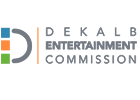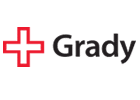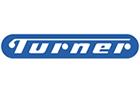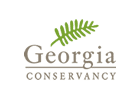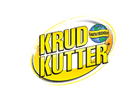By Janice Ramos
Unlocking the true potential of keyword research goes beyond identifying popular terms. This guide explores the vital role of user intent in keyword research, revealing how aligning your content with what users are actively seeking can significantly elevate conversion rates on your website.
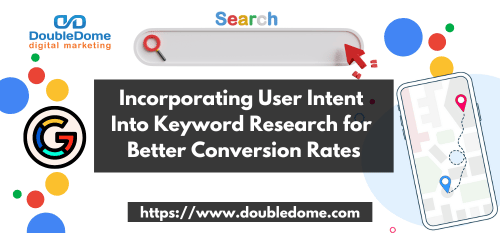
Decoding User Intent
Delve into the concept of user intent and its pivotal role in shaping keyword strategies. Understand the various types of user intent, from informational to transactional, and how they influence search queries.
Analyzing Search Queries
Tip: Utilize tools like Google Analytics and Google Search Console to analyze search queries leading to your website. Identify patterns and understand the intent behind various queries.
Example: If your website receives queries like “how to use” or “benefits of,” it indicates informational intent. Tailor content to provide in-depth information and answer user queries.
User Intent Surveys
Tip: Conduct user surveys to directly gather insights into what visitors are looking for on your site. Ask questions about their goals, challenges, and expectations when using your products or services.
Example: If an e-commerce site discovers through a survey that users often search for “reviews” or “comparisons,” it reveals a transactional intent. Optimize pages to assist users in making purchasing decisions.
Keyword Mapping with User Intent
Learn the art of mapping keywords to user intent. Explore strategies for aligning specific keywords with the different stages of the customer journey, ensuring your content resonates with the intended audience.
Customer Journey Alignment
Tip: Map keywords to different stages of the customer journey. Use broad, informative keywords for awareness, and transition to specific, transactional keywords as users move towards the decision-making stage.
Example: For a travel website, “best places to visit” aligns with the awareness stage, while “book hotels in [location]” aligns with the decision-making stage.
Content Personalization
Tip: Personalize content based on user intent. Create landing pages or product pages that directly address the intent associated with specific keywords, offering a tailored experience.
Example: If users search for “organic skincare routine,” a skincare website can create a dedicated page with detailed information and product recommendations.
Long-Tail Keywords and Specific Intent
Uncover the power of long-tail keywords in capturing specific user intent. Discover how these more detailed queries can lead to higher conversion rates by addressing users’ precise needs.
Problem-Solution Approach
Tip: Structure content around solving specific problems. Long-tail keywords often reflect users seeking solutions. Craft content that not only addresses the keyword but provides actionable solutions.
Example: For a finance blog, targeting “how to save money on a tight budget” allows for detailed content offering practical budgeting tips.
User Intent in Meta Descriptions
Tip: Incorporate long-tail keywords in meta descriptions. This not only helps in SEO but also sets clear expectations for users, increasing the likelihood of clicks.
Example: A recipe website targeting the long-tail keyword “easy gluten-free dinner recipes” can use a meta description like “Discover quick and delicious gluten-free dinner recipes for busy evenings.”
Analyzing SERP Features for Intent Clues
Explore the nuances of Search Engine Results Pages (SERPs) and how they provide valuable clues about user intent. Learn to analyze featured snippets, knowledge panels, and other SERP features to refine your keyword strategy.
Featured Snippets Optimization
Tip: Identify and optimize for featured snippets related to your targeted keywords. Craft concise and informative content to increase the chances of appearing in these prominent positions.
Example: If “how to tie a tie” is a key keyword, create content structured in a step-by-step format to increase the likelihood of being featured in the snippet.
Knowledge Panel Utilization
Tip: Understand how knowledge panels appear for certain queries. Ensure your business or entity information is accurate and comprehensive, enhancing your visibility and credibility.
Example: A local business optimizing for its knowledge panel includes accurate operating hours, contact information, and customer reviews, aiding users in making informed decisions.
Utilizing Tools for Intent-Based Research
Embrace the use of tools for intent-based research. From Google Trends to keyword research tools, discover how these resources can provide insights into trending topics and user preferences.
Google Trends for Trending Topics
Tip: Leverage Google Trends to identify rising topics and queries. Stay ahead of trends by creating content that aligns with emerging interests in your industry.
Example: A technology blog noticing an uptick in searches for a new gadget can create timely content, capitalizing on the increased interest.
Keyword Research Tools Insights
Tip: Use keyword research tools like SEMrush or Ahrefs to analyze competitors and discover related keywords. This helps in expanding your keyword strategy and staying competitive.
Example: An e-commerce store selling running shoes may find valuable long-tail keywords like “best running shoes for flat feet” through these tools, addressing a specific user concern.
Monitoring and Adapting to Search Trends
Understand the dynamic nature of search trends and user behavior. Learn how to monitor changes in search patterns and adapt your keyword strategy to stay relevant and maximize conversions.
Google Analytics for User Behavior
Tip: Regularly monitor Google Analytics to track user behavior, including bounce rates and time on page. Adapt your content strategy based on insights, optimizing for user engagement.
Example: If a blog post receives high traffic but has a high bounce rate, consider revising the content to better align with user expectations and intent.
Adaptable Content Calendar
Tip: Maintain a flexible content calendar to accommodate emerging trends. Be prepared to pivot and create timely content that resonates with your audience’s evolving interests.
Example: A social media marketing agency, noticing a sudden interest in a new platform, adjusts its content calendar to include guides and tips related to maximizing visibility on that platform.
Creating Content that Aligns with Intent
Delve into the content creation process, emphasizing the importance of aligning content with user intent. Explore how crafting informative, engaging, and actionable content caters to the diverse needs of your audience.
Interactive and Engaging Content
Tip: Create interactive content, such as quizzes, surveys, or infographics, to cater to diverse user intents. Interactive elements enhance user engagement and satisfaction.
Example: A travel website might create a quiz titled “Find Your Ideal Vacation Spot,” engaging users and guiding them to relevant destination pages based on their preferences.
Actionable CTAs and Next Steps
Tip: Conclude content with clear Calls-to-Action (CTAs) that align with user intent. Guide users to take the next steps, whether it’s making a purchase, signing up for a newsletter, or seeking further information.
Example: A software company, after explaining a product’s features, includes a CTA like “Start Your Free Trial Today” to cater to users in the decision-making stage.
Analyzing Conversion Data
Learn how to leverage conversion data for continuous improvement. Understand the role of analytics in assessing the effectiveness of your keyword strategy and making data-driven adjustments.
Conversion Funnel Analysis
Tip: Break down your conversion funnel into stages (awareness, consideration, decision). Analyze which keywords contribute to each stage and optimize accordingly.
Example: An e-commerce site may find that the keyword “best budget laptops” attracts users in the consideration stage, while “buy [specific laptop model]” targets those ready to make a decision.
A/B Testing for Keywords
Tip: Conduct A/B testing on landing pages optimized for different keywords. Analyze conversion rates to determine which keywords resonate best with your audience.
Example: A digital marketing agency might test two versions of a landing page, one optimized for “SEO services” and the other for “online marketing solutions,” to see which yields higher conversions.
Localized Keywords and Location-Based Intent
Recognize the impact of location-based intent on conversion rates. Explore the nuances of incorporating localized keywords to cater to users searching for products or services in specific geographic areas.
Geo-Targeted Content Creation
Tip: Tailor content to specific locations by incorporating localized keywords. Highlight local aspects, events, or services to attract users searching within a particular geographic area.
Example: A restaurant could optimize for “best Italian restaurant in [city]” to capture users looking for dining options in a specific location.
Google Business Profile Optimization
Tip: Optimize your Google My Business listing with accurate location information, business hours, and customer reviews. This enhances visibility for local searches and improves trust among potential customers.
Example: A local bakery ensures its Google My Business profile includes updated information, enticing photos, and positive customer reviews to attract nearby customers.
Optimizing for Voice Search and Conversational Intent
Conclude with insights into the rising trend of voice search. Explore strategies for optimizing your keyword research to align with conversational queries, providing a seamless experience for users and enhancing conversion rates.
Natural Language Integration
Tip: Optimize content for natural language queries by incorporating conversational phrases and question formats. This aligns with how users express themselves in voice searches.
Example: An online encyclopedia may optimize for voice search by structuring content to answer questions like “What is the history of [topic]?” in a conversational tone.
Featured Snippet Optimization for Voice
Tip: Focus on creating content that’s likely to be featured in voice search responses. Craft concise answers to common questions related to your industry or niche.
Example: A travel agency aiming for voice search visibility ensures its content provides succinct and informative answers to queries like “What are the top tourist attractions in [destination]?”
Conclusion
Incorporating user intent into keyword research is a strategic imperative for businesses aiming to boost conversion rates. By understanding the motives behind user searches, tailoring your content accordingly, and staying adaptable to evolving trends, you can create a more compelling online presence that converts casual visitors into engaged customers.
Unlock unparalleled visibility and drive more traffic to your business. Our expert SEO Services team is ready to boost your rankings, enhance user experience, and amplify your online success. Message us now to discuss personalized SEO strategies tailored to your business needs!


